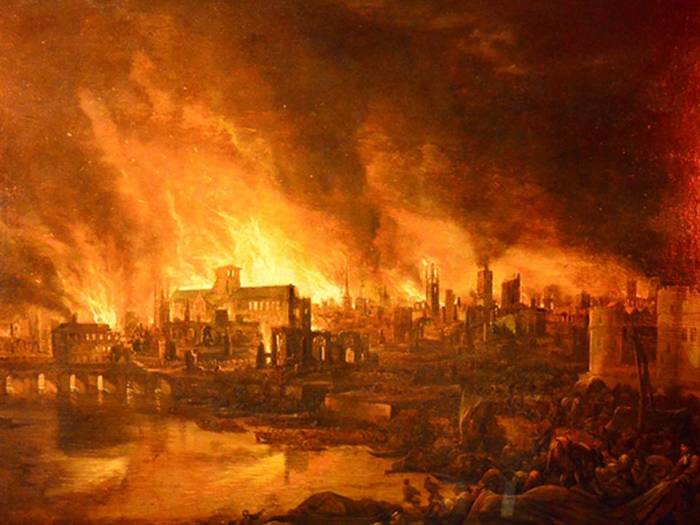In the great fire of london in 1666 half of london was burnt down but only 6 people died

In the Great Fire of London in 1666, Half of London was Burnt Down but Only 6 People Died

The Great Fire of London in 1666 remains one of the most significant events in the history of the city. This catastrophic fire spread across a vast area and left a lasting impact on the landscape of London. While the fire led to massive destruction and widespread panic, it is intriguing to note that only six people lost their lives in this devastating incident.
The fire started on September 2, 1666, in a bakery on Pudding Lane. Due to dry weather conditions and strong winds, the fire quickly grew and engulfed nearby buildings. The flames rapidly spread through the narrow, wooden-dominated streets, creating a challenge for effective firefighting efforts.
The limited firefighting technology and infrastructure of the time contributed to the scale of the disaster. London lacked sufficient water supply infrastructure, making it difficult to combat the fire effectively. Additionally, the fire engines available in those days were powered by manual labor, and the fire personnel had little control over the growing inferno.
Despite the widespread devastation caused by the fire, it is remarkable that only six deaths were officially recorded. This relatively low number can be attributed to several factors.
Firstly, the fire started late at night when most people were asleep. As a result, many were able to evacuate their homes in time to save themselves. The majority of the deaths occurred as the fire continued the following day, when citizens were caught off guard by the rapid spread of the flames.
Secondly, the official death toll of six represents only those individuals whose bodies were specifically identified and recorded. Considering the chaotic nature of the fire and the era’s limited resources for recording casualties, it is likely that some deaths went unrecorded or were not recognized as being directly caused by the fire.
It is essential to remember that the Great Fire of London was a significant event in terms of urban planning and development. Following the fire, the city underwent a massive rebuilding effort under the guidance of architects such as Sir Christopher Wren. This led to the creation of grandiose structures such as St. Paul’s Cathedral, which continues to be an iconic symbol of London.
In conclusion, while the Great Fire of London in 1666 resulted in the destruction of approximately half of the city, the loss of life was surprisingly minimal. The fire serves as a testament to the resilience and endurance of the Londoners of that time. It also marks a turning point in the city’s history, sparking architectural innovations and changes in urban planning that still shape the landscape of London today.
Source: Smithsonian Magazine
Share
Related Posts
Quick Links
Legal Stuff

